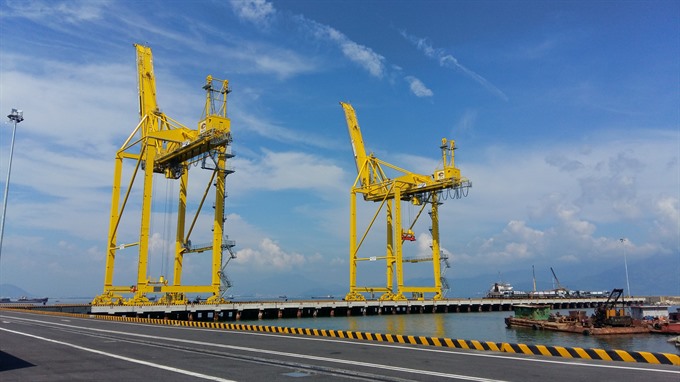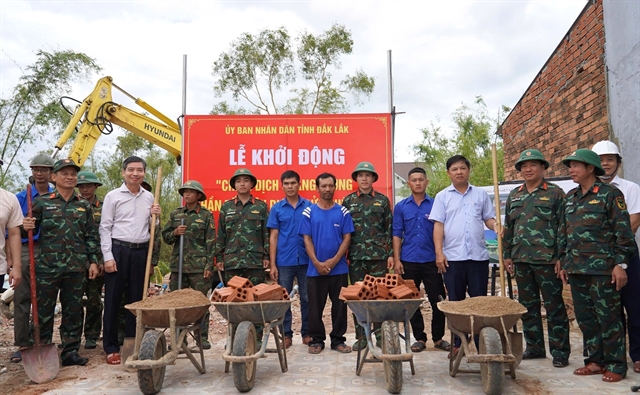 Society
Society
.jpg)
The central city has urged the Ministry of Transport to speed up the pre-feasibility study on the construction of the first stage of Liên Chiểu port in 2018-19, t be put into operation in 2022.
 |
| A new pier at Tiên Sa Port in Đà Nẵng. The port will be overloaded in 2020 with 10 million tonnes of cargo, and the port will host only cruise ships after 2030. — VNS Photo Công Thành |
ĐÀ NẴNG — The central city has urged the Ministry of Transport to speed up the pre-feasibility study on the construction of the first stage of Liên Chiểu Port in 2018-19, to be put into operation in 2022.
Chairman of the city People’s Committee, Huỳnh Đức Thơ said the ministry should review the report from Đà Nẵng before submitting the project to the Prime Minister next week.
Thơ said preparations for the first stage of the project will be completed in 2018-19, and construction will commence in 2020.
He said the first stage of construction will focus on infrastructure including piers and dykes to serve logistics, storage and transhipment at the port from 2022.
Liên Chiểu Port is designed to handle 3.5 to 5 million tonnes of cargo in the first stage from 2022.
It could allow access to 100,000 deadweight tonnage (DWT) cargo ships and container ships with loading capacities of 8,000 twenty-foot equivalent unit (TEUs) as well as 10,000DTW liquid cargo vessels.
Thơ said the first stage will need funds of VNĐ7.37 trillion (US$326 million), of which $152 million is earmarked for infrastructure, in 2018-22.
“The project is urgent as Tiên Sa Port will be overloaded after 2020, while Đà Nẵng plays as a key role in the central region. Liên Chiểu port would help ease congestion on Ngô Quyền Street and reduce traffic accidents due to the high number of container trucks on the road,” Thơ said.
“Tiên Sa Port has handled 8.4 million tonnes of cargo in 2018, marking 16.2 per cent annual growth. The port also saw a 22.6 per increase in the number of container shipments, and Ngô Quyền is the main route for container trucks,” he said.
According to a report by the city’s traffic police department, the high number of container trucks (making about 1,500 trips each day) on Ngô Quyền Street disrupts tourism transport (coaches, vans and taxis for tourists) from the city centre and airport to beaches on Sơn Trà peninsula.
In the city’s Master Plan 2030-45, Đà Nẵng will develop Liên Chiểu Port into a major cargo port in the central region and the East-West Economic Corridor No 2 (EWEC2) connecting Thailand, Myanmar, Laos and Việt Nam with a total investment of VNĐ32 trillion ($1.45 billion) in three phases.
The deep-sea Liên Chiểu port is eligible for connection with railway and road systems from the EWEC2, the Đà Nẵng-Quảng Ngãi Expressway, expansion of the Hải Vân Tunnel and a new railway station.
A survey from the ministry of transport revealed that Đà Nẵng, which is situated at the end of EWEC, would handle 29 million tonnes of cargo by 2030.
The central city’s port system including Tiên Sa, Liên Chiểu and Sơn Trà has been planned as the biggest integrated port among six seaports in Việt Nam (Quảng Bình, Quảng Trị, Thừa Thiên-Huế, Kỳ Hà, Dung Quất and Đà Nẵng).
According to Việt Nam’s seaport system development plan to 2020, Đà Nẵng Port has been confirmed as a major commercial port in the region, making it one of the key gateways to the East Sea from the sub-Mekong region. — VNS
.jpg)



